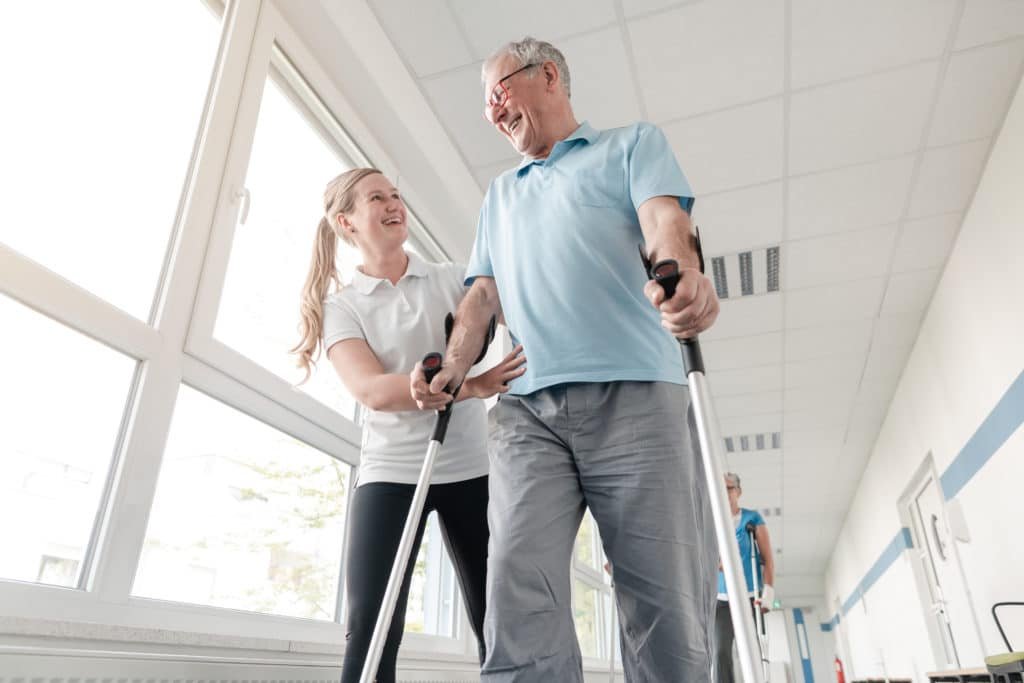Copyright © 2023. All rights reserved By visitingptservices.com
- Developed by
- Athmacreative

Gait training is a form of physiotherapy that focuses on improving a person’s ability to walk or move.
Gait refers to the way a person walks, including their posture, balance, and coordination. Gait training is often used to help individuals who have experienced an injury or illness that affects their ability to walk, such as a stroke, spinal cord injury, or Parkinson’s disease.
During gait training, a physiotherapist will work with an individual to assess their gait and identify areas where they may need support or modifications. This may include exercises to improve balance, strength training to improve muscle function, or the use of assistive devices such as canes, walkers, or braces.
Gait training may also involve practicing walking on different surfaces or in different environments, such as on stairs or uneven terrain, to improve an individual’s ability to navigate everyday environments.
Overall, gait training is an important component of physiotherapy, helping individuals to regain their mobility, improve their balance and coordination, and ultimately achieve greater independence and quality of life.
Gait training can benefit a wide range of individuals who have difficulty walking or moving due to injury, illness, or disability. Some examples of people who may benefit from gait training include:
In general, gait training can help anyone who wants to improve their walking ability, balance, and coordination, and ultimately achieve greater independence and quality of life.
Strengthening exercises are an essential component of gait training. The goal of these exercises is to improve the strength and endurance of the muscles used in walking, including the muscles of the legs, hips, and core. Some common strengthening exercises used in gait training may include:
The specific strengthening exercises used in gait training will depend on the individual’s needs and goals, as well as any underlying medical conditions they may have. It is important to work with a qualified physical therapist to develop a safe and effective strengthening program.
Balance training is another important component of gait training. The ability to maintain balance is essential for safe and effective walking. Some common balance exercises used in gait training may include:
As with strengthening exercises, the specific balance exercises used in gait training will depend on the individual’s needs and goals, as well as any underlying medical conditions they may have. Working with a qualified physical therapist can help ensure a safe and effective balance training program.
Range of motion (ROM) exercises are also an important component of gait training. These exercises aim to improve the flexibility and mobility of the joints involved in walking. Some common ROM exercises used in gait training may include:
As with strengthening and balance exercises, the specific ROM exercises used in gait training will depend on the individual’s needs and goals, as well as any underlying medical conditions they may have. Working with a qualified physical therapist can help ensure a safe and effective ROM training program.
Assistive devices may be used in gait training to help support and stabilize individuals who have difficulty walking independently. Some common assistive devices used in gait training may include:
Gait analysis is an important aspect of gait training that involves the evaluation of an individual’s walking pattern or gait. During gait analysis, a physical therapist or other healthcare professional will assess various aspects of the individual’s gait, such as stride length, step width, and foot placement. This analysis helps to identify any abnormalities or areas of weakness in the individual’s gait pattern that may be contributing to mobility issues or increasing their risk of falls. Based on the results of gait analysis, a customized gait training program can be developed to help address any identified issues and improve the individual’s overall gait pattern.
(516) 872-4227